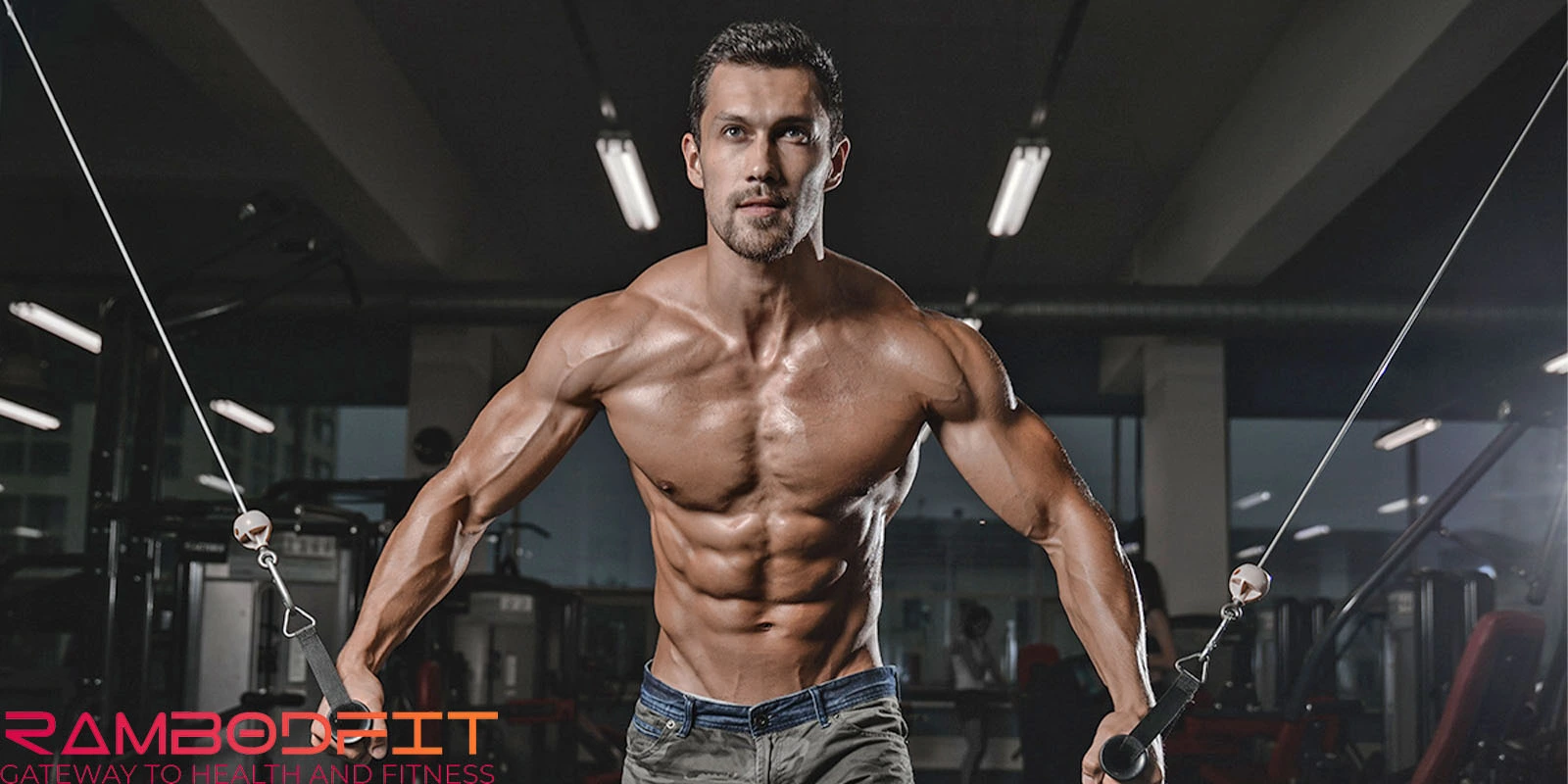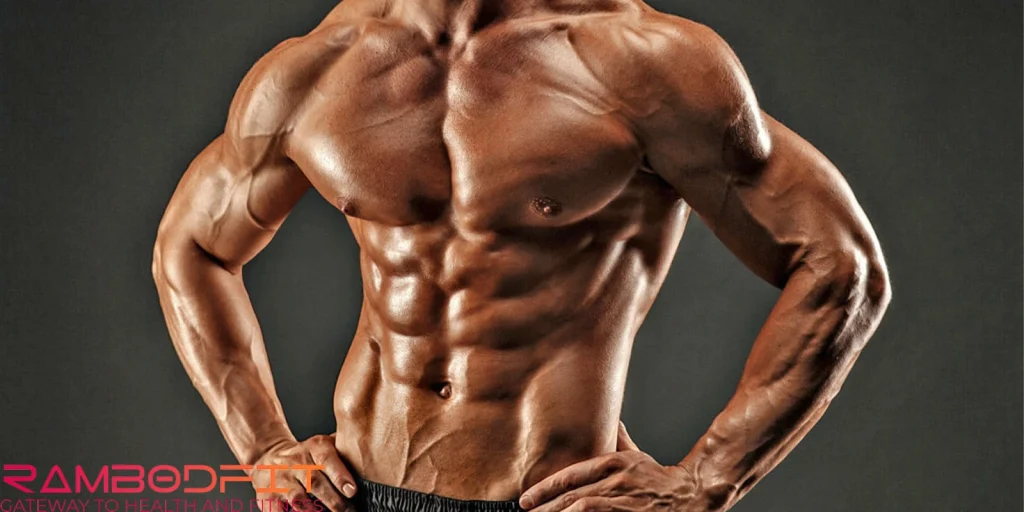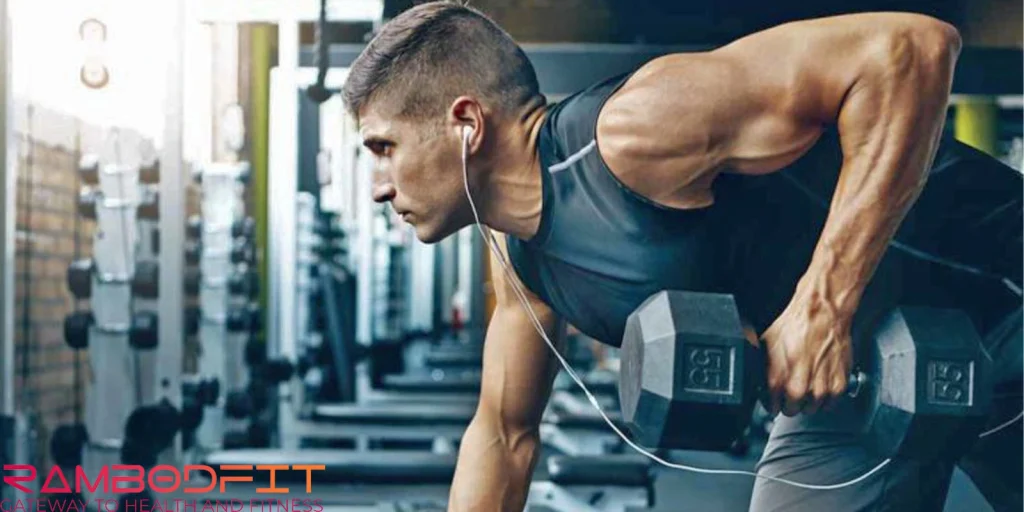


The muscle pump makes your muscles swell and veins stand out after a tough workout, and it feels like proof you’re building muscle. Scientists call this process exercise-induced transient hypertrophy. Here’s an explanation of what happens inside your muscles during that pumped-up feeling, knowing more pump more gains.
• Blood flows more to muscles working hard. This flow pushes plasma from the blood into spaces around muscle cells, which causes a temporary swelling.
• Waste products like lactate and hydrogen ions build up in the muscles. These attract more water into the muscle cells, making them swell even more.
• Blood gets stuck when muscles stay contracted, stopping it from returning to the heart for a while. Experts call this blockage the “occlusion effect,” and it’s what makes muscles look pumped.
A lot of serious lifters focus on getting that pump feeling and believe it leads to real muscle growth over time. But does this approach work as well as they think? At Rambodfit, we’ll provide you with trustworthy answers.
More Pump More Gains? That’s the question many lifters ask.

The pump gives a quick and satisfying feeling of improvement, but true muscle growth, often called permanent hypertrophy, depends on other important bodily processes:
More Pump More Gains might not be the full truth if other principles are ignored.
Lifting heavier weights within 70–85% of your one-rep max helps activate high-threshold motor units. This activation supports myofibrillar hypertrophy, which is the actual growth of the muscle’s contractile proteins and functional parts that help with movement.
Time under tension plays a key role in muscle building. By slowing down the eccentric or lowering phase of a lift, you create tiny muscle fiber tears. These micro-tears kickstart a repair response using pathways like mTOR signaling. This process leads to muscle growth and physical adaptation over time.
If you’re aiming for more pump more gains, don’t forget the role of tension.
Introducing new ways of moving, like adding different exercises or advanced methods such as drop sets, can cause small but helpful damage to muscles. This damage encourages action from satellite cells, which are key to repairing and growing muscles. Inflammatory signals like interleukin-6 (IL-6) help guide the muscle’s changes and improvements as time goes on.
Muscle damage adds more than just a pump—it builds real gains. More Pump More Gains only works with a smart variety.
When substances like lactate, reactive oxygen species, and inorganic phosphate build up in muscles, they could help muscles grow in different ways. This buildup causes a swelling reaction in cells, putting stress on the muscle’s outer layer. This stress switches on anabolic signaling systems like mTOR, leading to protein building and muscle development.
• Hormonal responses → Growth hormone (GH) and insulin-like growth factor-1 (IGF-1) levels spike during the pump. However, scientists still debate their long-term role in muscle growth.
• Recruiting fibers better → As muscles tire, the body starts using more fibers. This fiber activation might create extra growth signals through greater motor unit engagement.
Metabolic stress supports growth, but it’s just one piece of the puzzle behind more pump, more gains.
Main Idea:
The pump plays a part in muscle building, but it is not the main cause of hypertrophy. Even though lighter weights can create a pump, building muscle depends on steady progressive overload with planned training routines.
More Pump More Gains isn’t wrong—it’s just incomplete without progressive overload.

• Core Exercises: Focus on doing compound lifts with heavy weights. Perform 5 to 8 reps for each set, with 3 to 5 sets total, and take solid rest breaks of 2 to 3 minutes between sets.
• Example: Stick to basic lifts like deadlifts, squats, and weighted pull-ups to build full-body strength. These should be the backbone of any effective strength training plan.
Don’t skip heavy basics in your more pump, more gains routine.
• Extra Work: After heavy lifts, add isolation work with moderate weights, high reps (10–20), and short rest (30–60 sec). Use controlled tempo to maximize tension and stress.
• Example: Cable flyes for chest, leg extensions for quads, and bicep curls with full range of motion are great additions.
Strategic pump work rounds out a more pump, more gains approach.
• Blood Flow Restriction (BFR): Lift light (20–30% of 1RM) with pressure bands. BFR increases stress and muscle protein synthesis.
• Drop Sets & Myo-Reps: Push past fatigue with reduced weights or minimal rest pauses.
• Supersets & Giant Sets: Combine exercises to keep intensity up and recovery active.
These methods turn the concept of more pump, more gains into actual muscle stimulus.
Be Careful
High-rep training boosts sarcoplasmic hypertrophy (fluid/glycogen), but relying on the pump alone won’t grow long-term strength or size. Myofibrillar hypertrophy from heavier loads is key.
More Pump More Gains only works if it complements, not replaces, heavy lifting.
• Schoenfeld (2013): Muscles can grow with both light and heavy loads if taken close to failure. But heavier loads better support strength.
• BFR Research: Great for enhancing results when heavy lifting isn’t possible, but not a substitute for standard training.
• Main Point: Combine tension-focused heavy lifting with pump-style finishers for full muscle development.
Science backs a smarter, more pump, more gains hybrid strategy.
• New Lifters: Focus on learning movement mechanics and building strength first. Don’t chase the pump too early.
• Intermediate/Advanced: Add pump work after heavy lifts. Include isolation, drop sets, and other stress-focused techniques.
• Physique Athletes: Use pump workouts strategically before competition to enhance muscle appearance, but rely on heavy progressive training in the off-season.
More Pump More Gains applies differently across training levels—adjust wisely.

The muscle pump may feel rewarding, but it’s more of a side effect than the main objective. Real growth comes from mechanical tension and progressive overload. Pump work should support—not replace—these foundations.
For real progress, train smart: More Pump More Gains—but with balance.
To Learn More
• Schoenfeld, B. (2010). The mechanisms of muscle hypertrophy and their application to resistance training. JSCR.
Pump training adds muscle growth by creating metabolic stress, but the best results come from focusing on heavier weights and progressive overload. More pump more gains
No, including pump training in the right way can help build strength. It encourages muscle growth by using different methods to challenge the muscles.
The pump makes muscles look bigger right away and helps them focus better on their movements. This can boost motivation during workouts. Still, the pump is not the main cause of long-term muscle growth.